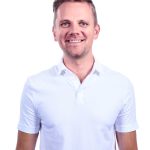Is College Tuition Tax Deductible? Here’s How To Save on Taxes

Commitment to Our Readers
GOBankingRates' editorial team is committed to bringing you unbiased reviews and information. We use data-driven methodologies to evaluate financial products and services - our reviews and ratings are not influenced by advertisers. You can read more about our editorial guidelines and our products and services review methodology.

20 Years
Helping You Live Richer

Reviewed
by Experts

Trusted by
Millions of Readers
No, college tuition isn’t directly tax-deductible, but you can lower your tax bill using valuable education tax credits. This guide explains which credits are available and how you can claim them on your tax return.
Credits vs. Deductions
In general, tax credits are more valuable than tax deductions. While tax deductions lower your total taxable income, tax credits credit directly reduces the amount of tax you owe, dollar for dollar.
For Example
A tax deduction of $2,000 will lower your taxable income by $2,000 — and in the 22% tax bracket, this would mean you’d lower your taxes by $440. But a $2,000 tax credit lowers your taxes by $2,000, which is far more valuable than a deduction.
Which Education Tax Credit Should You Claim?
There are two main tax credits available for education expenses:
- The American Opportunity Tax Credit (AOTC)
- The Lifetime Learning Credit (LLC)
Each credit is designed for specific tax situations. While you can’t claim both credits for the same student in the same year, choosing the right one is critical for maximizing your tax savings.
American Opportunity Tax Credit (AOTC)
The American Opportunity Tax Credit (AOTC) offers a tax credit of up to $2,500 per student enrolled in an undergraduate program within their first four years of college. Parents — or independent students — can claim this credit for college tuition, books and other costs associated with pursuing a four-year degree. The student must be enrolled at least half-time at a qualifying college, and up to 40%, or $1,000, of the credit is refundable.
Lifetime Learning Credit (LLC)
The Lifetime Learning Credit (LLC) offers a tax credit of up to $2,000 for students in undergraduate, graduate, or professional learning programs. Parents that claim students on their tax return can claim this credit for college tuition, books, and other costs associated with pursuing a four-year degree. The credit is nonrefundable, but you only have to take a single course at a minimum to qualify.
AOTC vs LLC
| Feature | American Opportunity Tax Credit (AOTC) | Lifetime Learning Credit (LLC) |
|---|---|---|
| Max credit | Up to $2,500 per student | Up to $2,000 per tax return |
| Refundable? | Yes, up to 40%, or $1,000, is refundable | No, it is nonrefundable |
| Who qualifies? | Undergrad students in their first 4 years | Undergrad, grad, and professional courses |
| Enrollment | Must be enrolled at least half-time | One course is enough |
| Best for | Traditional 4-year degree-seeking students | Job skill improvement, graduate studies |
If you’re an undergraduate in your first four years, the AOTC is almost always the better choice due to its higher credit amount and refundability. For all other higher education, like graduate school or a single class to boost job skills, the LLC is your go-to option.
What Are Qualified Education Expenses?
Not all expenses you pay when attending college or continuing education courses qualify for a tax credit or deduction. Here are the types of expenses that qualify for tax credits and which ones don’t.
What You Can Claim
- Tuition and fees
- Books, supplies and equipment — even if not purchased from an educational institution
- Certain prepaid education expenses
What You Cannot Claim
- Costs covered by a tax-free scholarship, grant or fellowship
- Room and board
- Insurance
- Transportation
- Medical expenses and fees
- Personal living expenses
- Sports or activity fees
- Noncredit course fees
If you are filing for the Lifetime Learning Credit, you may be able to claim sports and activity fees, or non-credit course fees — only if these activities help you acquire or improve your job skills. But course-related books and supplies must be purchased from the educational institution to qualify.
How To Claim Your Education Tax Credit: A Step-by-Step Guide
To claim your tax credit on your tax return, you’ll first need to review your numbers on the IRS Form 1098-T sent to you by your education institution. It will include the qualified education and related expenses, plus any adjustments, scholarship or grant payments and your enrollment status. After receiving this form, here’s how to claim your credits:
Claiming the American Opportunity Tax Credit and Lifetime Learning Credit
The process is the same for claiming the American Opportunity Tax Credit or Lifetime Learning Credit. Here are the steps you’ll take:
- Wait for Form 1098-T: Your school will send you a form 1098-T at the beginning of the calendar year. The 1098-T reports the tuition paid and scholarships received. You’ll need this form before completing your tax return to claim education credits accurately.
- Gather your records: You’ll want to collect receipts for books, supplies, and equipment that might not be on the 1098-T. These expenses may qualify for education credits as well.
- Complete IRS Form 8863: You’ll need to complete IRS Form 8863, the “Education Credits” form, when filing your return. It will guide you through calculating the credit amount based on your expenses and income.
- File with your tax return: Complete and file your tax return, along with Form 8863, to claim your credits. Most tax software will automatically handle this after a series of questions.
Other Tax Breaks for Education Costs
If you’re paying off student loans or funding a 529 plan for your child, you could qualify for other deductions:
529 Savings Plan
A 529 savings plan can help you save up for college expenses for your children. You can fund a 529 account and invest your contributions, helping grow the account without paying taxes on the growth. Plus, over 30 states offer a state tax deduction or credit, which can further lower your taxes.
You can contribute up to $19,000 per kid into a 529 account, and the amount doesn’t count against your lifetime gift tax exclusion.
Student Loan Interest Deduction
If you take out student loans to pay for college, you might qualify for the student loan interest deduction. This deduction allows you to reduce your taxable income by up to $2,500 per year.
To qualify for the deduction, the interest deducted must be paid during the year, you can’t file as married filing separately, you and your spouse can’t be claimed as a dependent by another taxpayer and your modified adjusted gross income can’t exceed the annual limits.
And this is an “above-the-line” deduction, meaning you don’t need to itemize your taxes to claim it.
FAQs on College Tuition and Taxes
Here's more on whether or not college tuition is tax-deductible.- Can my parents claim an education credit if I file my own taxes?
- If you file your own tax return and your parents do not claim you as a dependent, you can claim the education tax credit. But if someone claims you as a dependent, you can't claim the credit unless you prove to the IRS that you provided 50% or more of your life expenses.
- Can I claim a tax credit if my tuition was paid with student loans?
- Yes, you can claim the American Opportunity Tax Credit (AOTC) or Lifetime Learning Credit (LLC), even if you paid with student loans. What happens if I receive a scholarship or grant?
- If you receive a scholarship or grant, the amount used for qualified education expenses cannot also be claimed as a tax credit. For example, if you receive a grant and pay $5,000 or your $6,000 tuition with the funds, you can only claim the remaining $1,000 as an education tax credit.
- Can I use a 529 plan and claim an education tax credit in the same year?
- Similar to scholarships or grants, using 529 funds for qualified education expenses reduces the amount you can use for education tax credit. For example, if you use 529 funds to pay $1,000 of your $1,500 in education fees, only the remaining $500 would be eligible for education tax credits.
Michael Keenan contributed to the reporting for this article.
Our in-house research team and on-site financial experts work together to create content that’s accurate, impartial, and up to date. We fact-check every single statistic, quote and fact using trusted primary resources to make sure the information we provide is correct. You can learn more about GOBankingRates’ processes and standards in our editorial policy.
 Written by
Written by  Edited by
Edited by 

























